Bass overcrowding is probably the most common problem we see in all the ponds we manage. Yes, vegetation management is a problem for many. But as far as the fish populations go, bass overcrowding is rampant in ponds across the southeast. Much of this is due to minimal fishing pressure and worry that overfishing will deplete the population. However, this rarely actually happens and the result is that the bass become overcrowded. Resources are limited and the bass don’t grow or are skinny and malnourished. Below we’ll share some fast results from a pond that we first surveyed back in 2023.
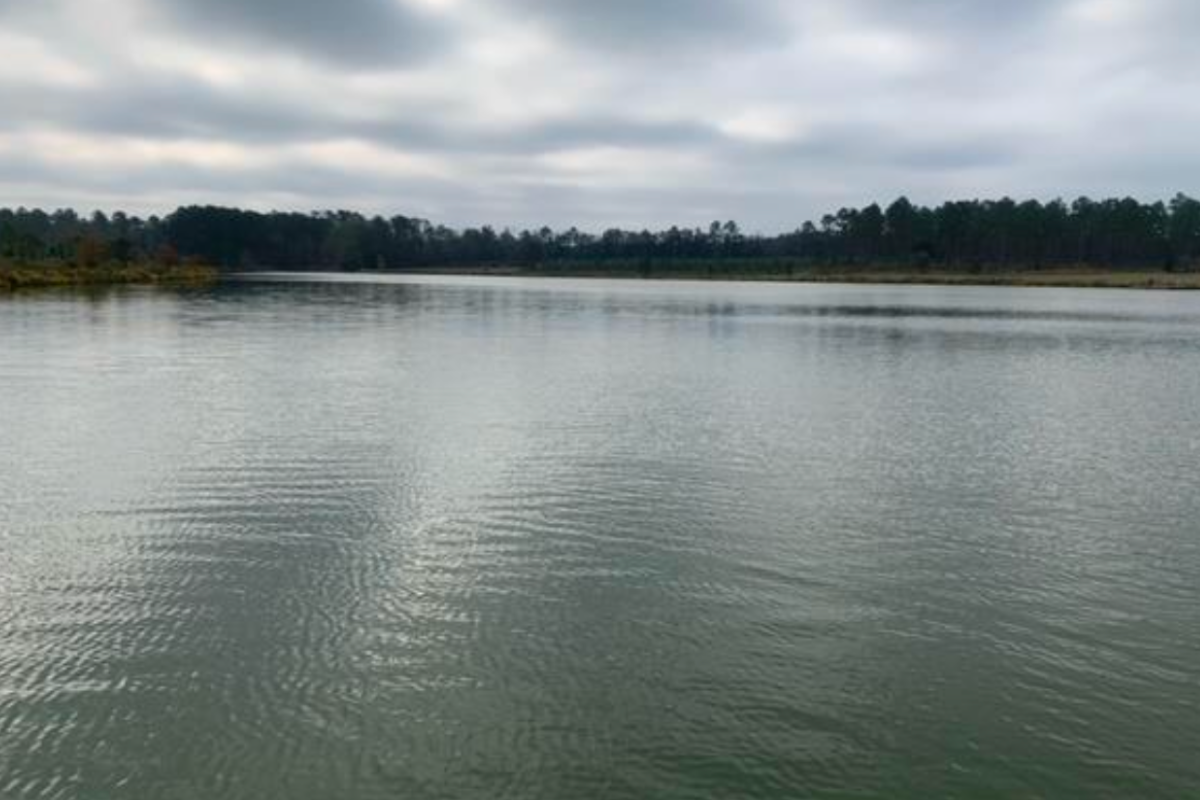
Detection of Bass Overcrowding
We performed an electrofishing population survey on this 20 acre pond back in the spring of 2023. Like most farm ponds in our area, this is a relatively shallow pond with an average depth of 6 ft and a max depth of 13 ft. It is a beautiful pond, but it was quickly obvious that it wasn’t loaded with bass and bluegill habitat.
After measuring and weighing the bluegill and bass from the electrofishing survey and returning them to the pond, we graphed the data and it was easy to see what was going on here. As indicated by the bluegill size class distribution in the figure below, the bluegill population was shifted towards the larger size classes. This meant that the pond didn’t have enough small bluegill for the bass to eat.
During the electrofishing survey, we noticed that the bass were overcrowded just based on our experience with these types of surveys. But this data confirmed what we thought. There were too many bass which were exploiting the small bluegill and causing the overall bluegill population to be unbalanced.
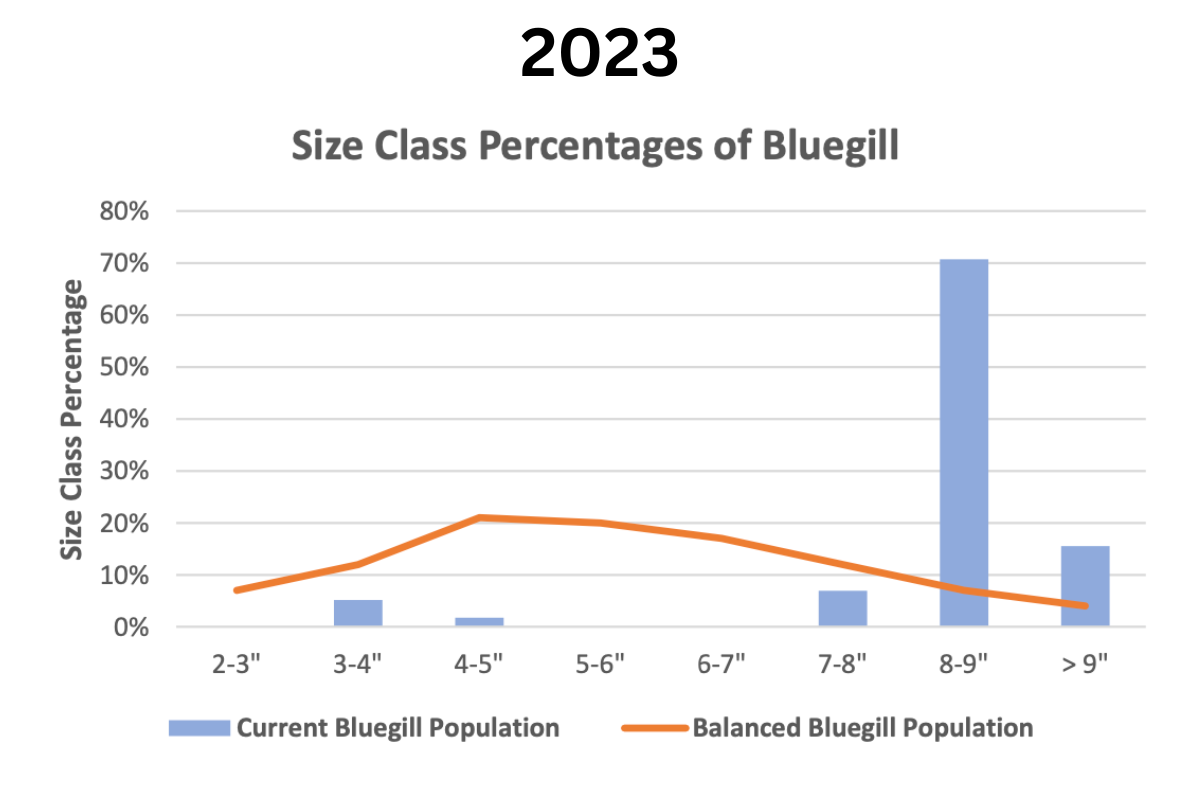
After realizing the bluegill population was unbalanced, we looked at the overall health of the bass population based on their relative weights. We could tell the bass weren’t as “fat” as they should be during the electrofishing survey, but having this data represented helps to explain what was happening here.
Looking at the figure below, you can see that none of the largemouth bass size classes were close to 100% relative weight. When we think about the bluegill size distribution in the above figure, this is easy to explain. There aren’t enough small bluegill for the overcrowded bass population, and the bass are not healthy as a result.
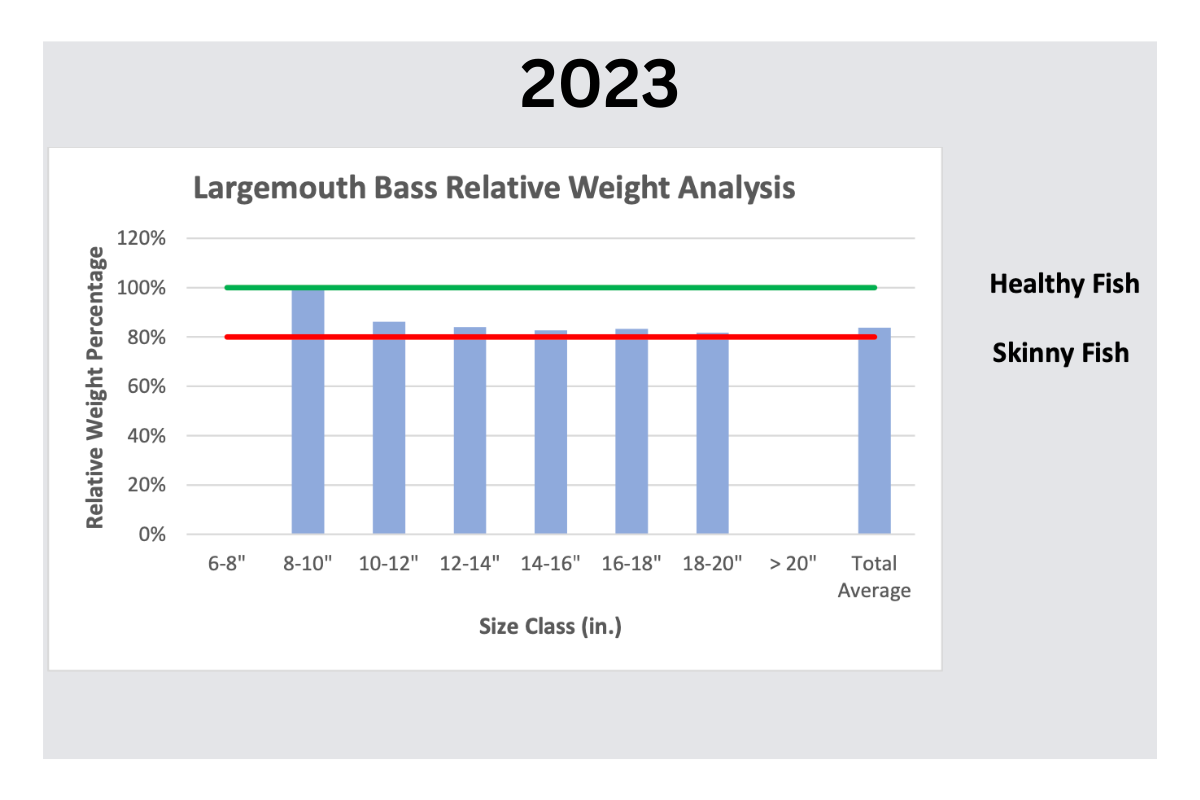
Solving the Bass Overcrowding Issue
After analyzing all the data, we made several recommendations to the pond owner. We first recommended that he make a significant investment into some artificial structures. These structures not only provide protection and habitat for bluegill, but they also provide an ambush habitat for largemouth bass. This makes it easier for largemouth bass to catch prey, expending much less energy than they would chasing prey over open water.
We also recommended stocking more bluegill to help get the population in balance. And lastly, we recommended a mass largemouth bass removal via electrofishing. The pond owner agreed to go ahead with all the recommendations and the results were phenomenal.
The figure below shows the bluegill size class percentages a year later after performing a second electrofishing population survey. You can now see that the bluegill population is much closer to being balanced. We now have many more bluegill in the size range that largemouth bass prefer to eat. The addition of the artificial habitat provided protection so that the smaller bluegill could grow to a larger size before getting eaten by the largemouth bass in the pond.
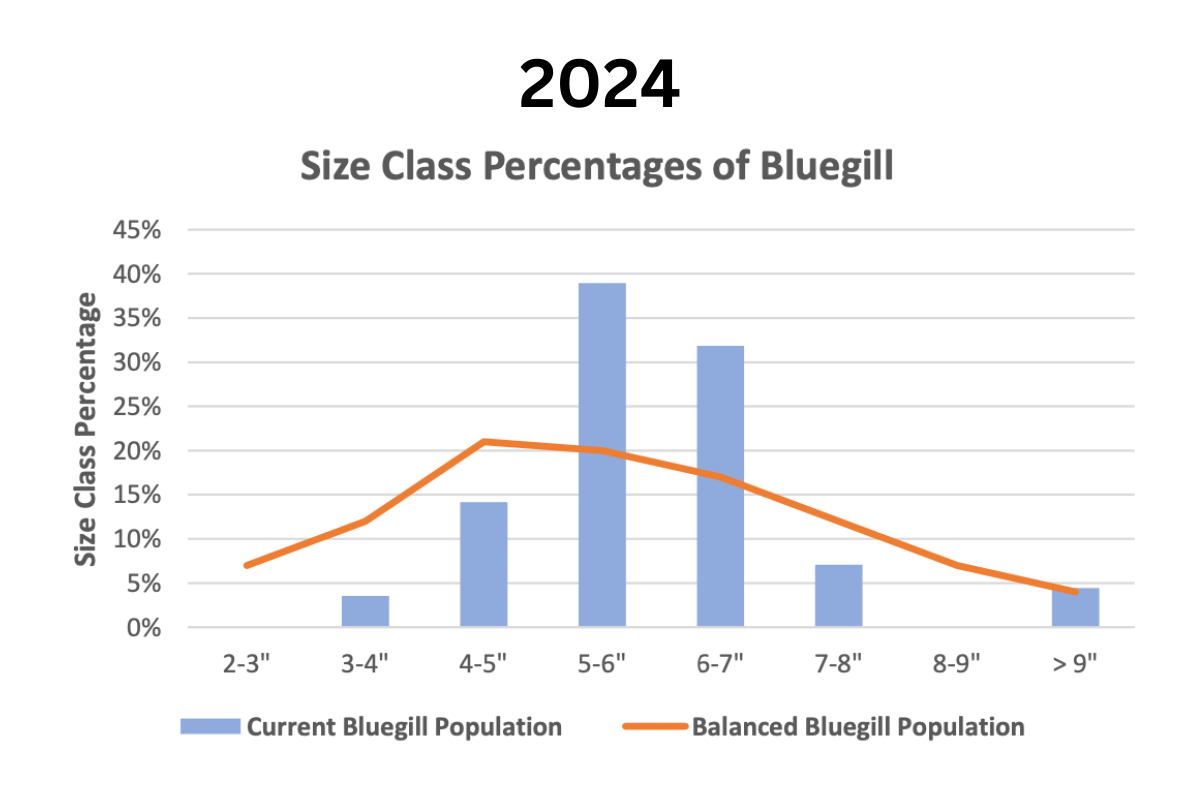
The impressive results from the bluegill size class distribution were echoed when we looked at the largemouth bass relative weight analysis a year later. Each size class of largemouth bass isn’t at the 100% relative weight benchmark yet, and we didn’t expect them to be in only one year. But they are getting there. They have improved significantly and will continue to improve as bass overcrowding is reduced and bluegill become less limited.
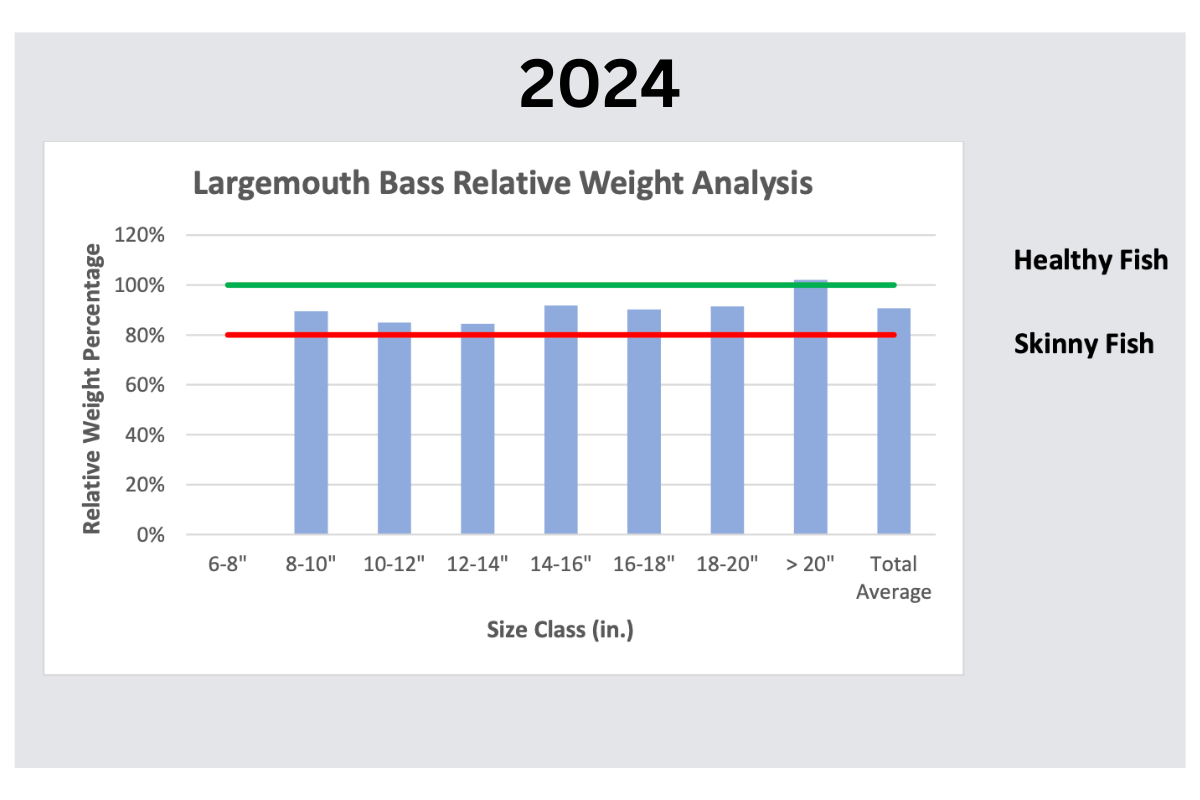
Let Us Help with Your Pond!
As mentioned above, bass overcrowding is one of the most prevalent issues we see in private ponds and lakes. And once the bass overcrowding problem becomes significant, it can be costly to resolve. The best plan of action is to actively remove 40 lbs of largemouth bass per acre per year from the pond. Also stocking bluegill on a yearly basis is a solid plan. If you’re in the south GA or north FL region and need help with bass overcrowding in your pond or lake, complete this form and we’ll contact you to schedule a time to meet.

